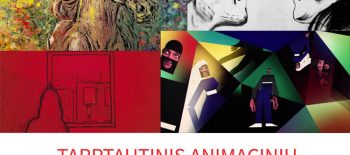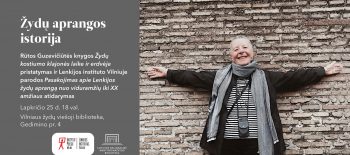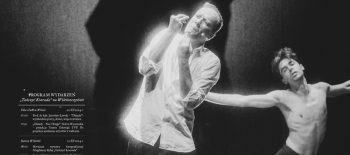Lenkų tapyba 18-ojoje Tarptautinėje Vilniaus tapybos trienalėje
Aštuonioliktą kartą vyksianti Tarptautinė Vilniaus tapybos trienalė šiemet plečia savo geografiją – parodose bus pristatomi menininkų iš 10 skirtingų šalių kūriniai, o trienalės renginiai vyks ne tik Vilniuje, bet ir Kaune. „Aš čia, ne tam, kad mane toleruotumėte, aš čia tam, kad jus dirginčiau“ – toks pavadinimas lydės trienalės renginius, kurie prasidės rugsėjo 5 dieną paroda Nacionalinio M. K. Čiurlionio dailės muziejaus Kauno paveikslų galerijoje.
„Šių metų trienalėje ypatingas dėmesys bus skiriamas Šiaurės, Baltijos šalims ir Lenkijai. Tai šalys, kurių menininkai bene greičiausiai reaguoja į aplink mus ir visame pasaulyje vykstančius įvykius. Tuo metu bendras trienalės tonas bus sutelktas į naujausias ir novatoriškiausias tapybos tendencijas, siekiant suvokti ir konceptualizuoti šiuolaikinės tapybos „dabartiškumą“, parodyti tapybos medijos meninių refleksijų įvairovę ir kismą“, – sako Meda Norbutaitė, menininkė ir pagrindinė Vilniaus Tapybos Trienalės 2024 kuratorė.
Nuo 1969 m. organizuojamas renginys šiemet pritraukė rekordinį – net 50-ties menininkų iš 10 skirtingų šalių skaičių. Pasak M. Norbutaitės, juos vienija gebėjimas atleipti dominuojančią provokatyvią trienalės koncepciją, technikų inovatyvumas bei meninė kokybė.
„Trienalės pavadinimas „Aš čia, ne tam, kad mane toleruotumėte, aš čia tam, kad jus dirginčiau“ atliepia ne tik tai, kokį santykį parodos ir kiti renginiai mėgins sukurti su žiūrovu, bet ir, tam tikra prasme, santykį su savimi. Trienalės metu bus keliamas klausimas, ar tapyba kaip medija atlieka meno funkciją ir paskirtį skatinti kritinį mąstymą, šviesti ir edukuoti“, – kalba pagrindinė Tarptautinės Vilniaus tapybos trienalės kuratorė.
Pagrindinės Tarptautinės Vilniaus tapybos trienalės parodos vyks rugsėjo 5 – spalio 27 dienomis Kauno paveikslų galerijoje ir spalio 3 – lapkričio 2 d. Vilniaus dailės akademijos parodų salėje „Titanikas“. Lydinčios parodos „Meno parke“ ir galerijoje „Arka“ žiūrovus kvies, atitinkamai, rugsėjo 5 – spalio 6 ir spalio 11 – lapkričio 10 dienomis.
Šiaurės šalių menininkai: Christine Ödlund (SE), Erik Jeor (SE), Ivan Andersen (DK), Torben Ribe (DK), Dag Erik Elgin (NO), Ilija Wyller (NO), Tamara Piilola (FI), Jukka Rusanen (FI)
Kuratorius: Henrik B. Andersen (DK)
Lenkijos menininkės: Ania Grzymała, Martyna Czech, Martyna Borowiecka, Ewa Miazek
Kuratorius: Krzysztof Stanisławski (PL)
Lietuvos menininkai: Henrikas Čerapas, Jonas Gasiūnas, Donata Minderytė, Vygantas Paukštė, Eglė Ulčickaitė, Eglė Karpavičiūtė, Stasys Eidrigevičius (LT/PL)
Kuratorė: Meda Norbutaitė (LT)
Apie lenkų dailininkus
Krzysztof Stanisławski
A new generation of Polish painting
Polish painters presented as part of the International Painting Triennial Vilnius Kaunas 2024 represent, apart from one, Ewa Miazek, who is the classic of Polish painter, the New Generation of our art. This is the newest, most current phenomenon, which made itself felt a few years ago, but has not yet received a proper critical description or summary. Yes, there were several post-competition exhibitions, including: Painting competition named after Eugeniusz Geppert in Wrocław or Bielska Jesień in Bielsko-Biała, in which representatives of the New Generation took part and won prizes. The exhibition „The New Generation and Classics from the Wojciech Fibak Collection” at the Znaki Czasu Center for Contemporary Art in Toruń also provides a specific, but incomplete summary of the phenomenon. I am sure that this year, or next year at the latest, a large exhibition will be organized in Poland, but maybe abroad, showing this New Generation in all its glory. And this is a truly valuable and original phenomenon.
I have been dealing with contemporary art as a critic and curator for over 40 years, and in my time a similar breakthrough, i.e. a phenomenon, a wave, a boom in the field of Polish art occurred only once, in the 1980s. From the beginning of this difficult decade for Poland to circa 1992. We are talking about New Expression, a wave of independent art that opposes the political and cultural system of the communist authorities. They were young „Polish wild artists”, mainly painters and sculptors, working in the style of Neo-Expresionism. Today, they are professors at most art schools in the country, they are the ones who have made the greatest careers in the country.
Until yesterday. Because today they have been dethroned by a new generation of artists, or rather mainly female artists, most often 30-40 years old. Now they are invited by the largest galleries in Poland and around the world, and they win all rankings and auctions. Stars of the New Generation sell their works through the best galleries in the world, such as Gagosian Gallery in New York (Ewa Juszkiewicz) and reach prices of 1-1.5 million dollars per painting, in Poland slightly lower, approximately PLN 3.5 million, less than a million dollars. None of the painters of New Expression, i.e. „Polish wild artists”, sells at such a price level, not even Wilhelm Sasnal or Marcin Maciejowski, Polish international „stars” to date. Of course, prices are not everything, but let’s also remember that they do not come out of nowhere.
Collectors are eagerly awaiting new paintings, galleries are organizing subscriptions, and it is easier today to buy a painting by a classic of the Polish avant-garde than by a 35-year-old painter from the New Generation. After the exhibition „The Triumph of Painting” by Charles Saatchi at the beginning of the 21st century, I read about records and several years of waiting for paintings by, for example, Neo Rauch. At that time it was unthinkable in our country, I read about it like science fiction. And 20 years have passed and the situation is repeating itself in Poland. Hopefully not only in Poland.
The new generation consists of very talented artists, young masters, original and universal, deprived of that Central European „regionalism”, a certain parochialism, which was valuable and understandable to us, but not necessarily in the world.
The three painters selected by me, as one of the main curators of the Triennial and curator of the Polish exhibition: Martyna Czech, Martyna Borowiecka and Ania Grzymała, do not yet have the status of „stars” of the New Generation, although Martyna Czech could actually legitimately aspire to such a status. This is changing dynamically: throughout 2024, rankings and auction rates change, galleries organize exhibitions and take part in international art fairs. I am writing these words in July, but in November the situation may be different. This is what I wish for young artists, that they achieve everything that is within their reach. I believe that participation in the Vilnius-Kaunas Painting Triennial will also have a positive impact on their careers.
Warsaw, July 2024, Krzysztof Stanisławski



